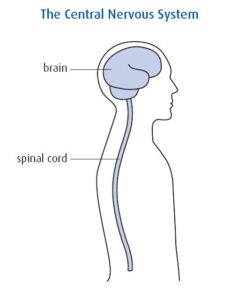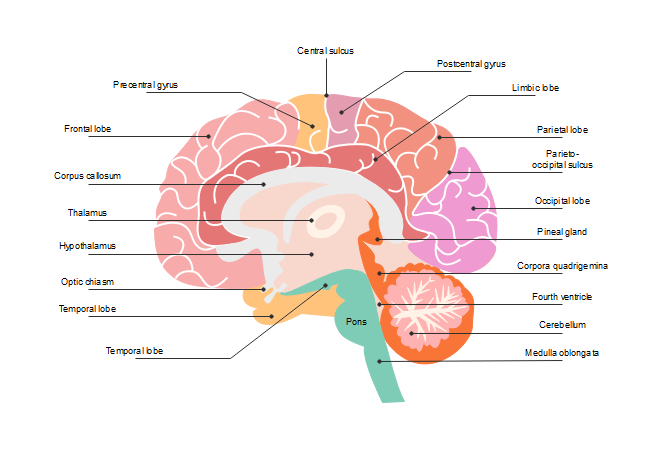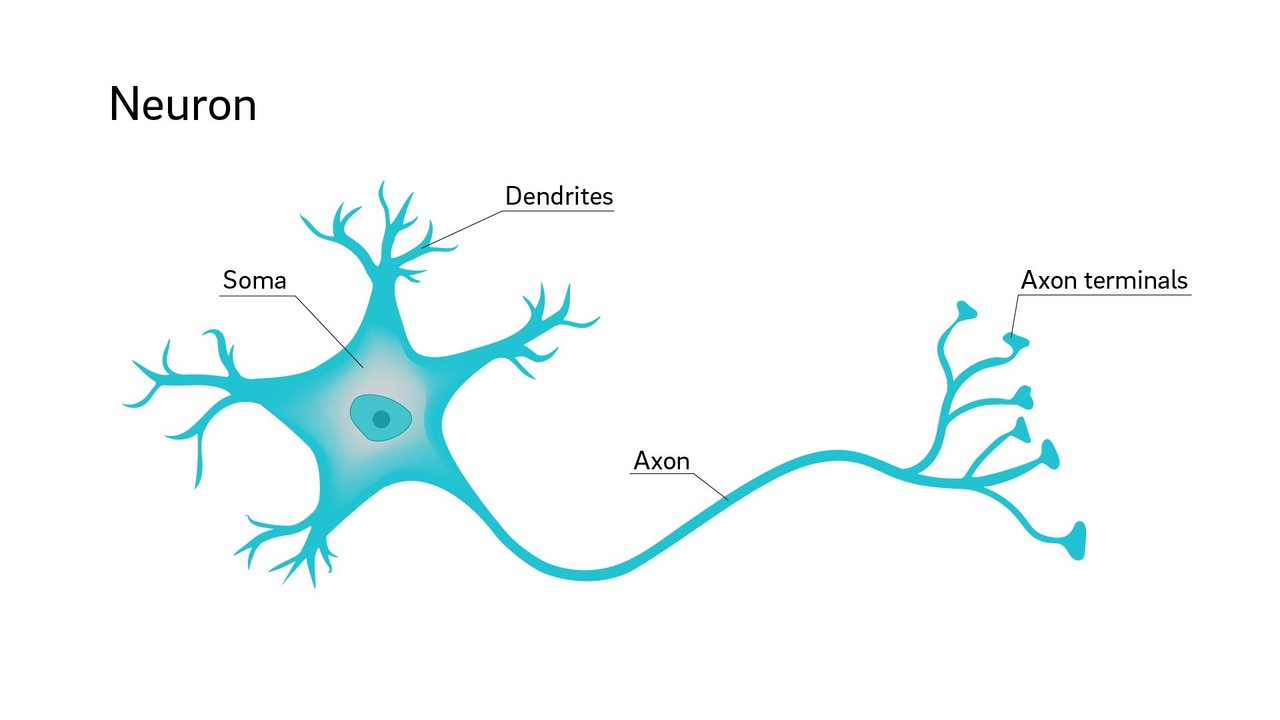The nervous system works as a whole, but as it is so complex in both structure and functioning it is usually divided into separate subsystems - the central, peripheral and autonomic nervous systems.
The central nervous system, or CNS, consists of the brain and spinal cord. These structures cor-ordinate and oversee all other parts of the nervous system. We are aware of some of their activity, but much of their functioning is at an unconscious level, largely beyond voluntary control.

The brain itself is an amazing organ. Even today, after centuries of study, we don't fully understand how it works. Not only is it the main controlling mechanism for all body functions, it is also where we store information and memories, interpret sensations from the world around us, think and reason. It is also the home of our mind, our consciousness and our self awareness.
What is the Brain?
The brain consists of several main regions. The outer layer of the cerebrum is called the cerebral cortex and is divided into two halves, the right and left hemispheres, which each control the opposite side of the body, but the same side of our face and head. Each of them is further divided into lobes - frontal under the forehead, temporal at the sides of the head, occipital at the back and parietal at the top. The lower parts of the cerebrum are involved in fine-tuning our voluntary movements, enabling us to retain patterns of movement like riding a bike. The thin wrinkled outer cerebral cortex is involved in speech, interpretation of sensory information, voluntary muscle movements, and all our mental functions, such as thought, memory, reasoning and learning.

At the very base of the cerebrum lie the thalamus and hypothalamus. the thalamus is where messages of sensation first reach the brain. The hypothalamus is the crucial control centre for the autonomic nervous system (ANS) and, via the pituitary gland that hangs from its base, the endocrine system.
Using these two systems, it maintains the stable functioning of the body that we call homeostasis, irrespective of changing conditions in our external or internal environment.
Behind the cerebrum is the cerebellum, a smaller wrinkled, walnut-like structure. It is responsible for balance the the coordination of complex sequences of movements.
All these parts of the brain sit at the top of the narrow brain stem, which is divided into three sections. The first controls our reflex eye movements and ear input, the second acts as a bridge for signals between the cerebrum, cerebellum and medulla oblongata, the next part of the brain stem. The medulla oblongata contains the 'vital centres'. reflex areas that maintain the basic rhythms of breathing and heartbeat, and control blood pressure. The medulla oblongata narrows to become the spinal cord.
Bony Protection
As befits their importance, the brain and spinal cord are well protected an virtually isolated from the rest of the body. First, they are surrounded by bony structures. In the case of the brain, the eight skull bones fuse together to form the box-like cranium, while the spinal cord passes through a canal created by openings in the vertebrae as they are stacked one upon the other. Inside the bones there is a triple layer of membranes and finally, the cerebrospinal fluid.
Neuron Messengers
The nervous system is made up of nerve cells called neurons which are able to generate and receive messages in the form of nerve impulses. A nerve cell generates an impulse in response to a stimulus, and that impulse is sent to other cells thanks to chemicals called neurotransmitters.

There are over 50 of these chemicals, most of which have only been discovered in the last 25 years. Different neurotransmitters work to enhance transmission of different types of impulses, and only affect nerve cells with specific receptors for that particular substance. One of the best known is serotonin, low levels of which are implicated in some types of depression.
Whether working on a conscious or subconscious level, the central nervous system is responsible for interpreting incoming sensory information, such as sounds, sights or smells, storing that new information temporarily or some permanently, and then associating it with previously stored material - thought, memory, etc. If necessary, it then reacts to the information by sending out messages that cause changes in the body.